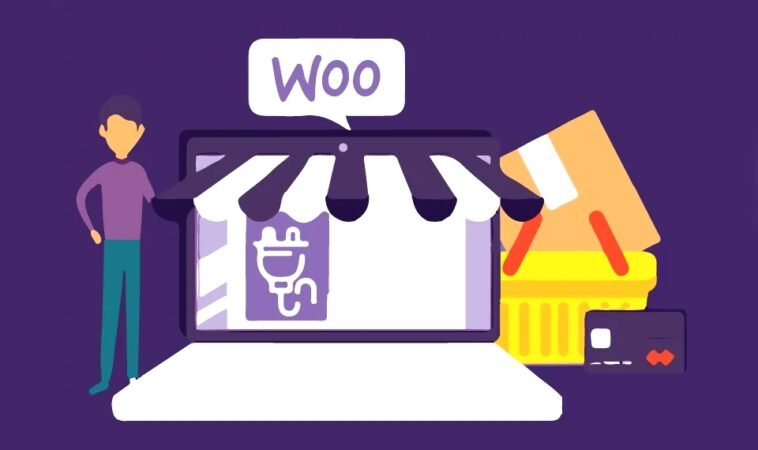Developing a WooCommerce website, while offering numerous advantages for creating an online store, also presents a set of distinct challenges. WooCommerce, a popular e-commerce plugin for WordPress, is favored for its flexibility and user-friendliness, but it requires careful handling to overcome certain difficulties. Here’s an extensive look at the main challenges involved in WooCommerce website development:
- Plugin and Theme Compatibility: One of the primary challenges in WooCommerce development is ensuring compatibility between the WooCommerce plugin, the chosen WordPress theme, and other plugins. While WooCommerce is compatible with most WordPress themes, not all themes are optimized for e-commerce. This can lead to design and functionality issues. Similarly, conflicts with other plugins can cause the site to malfunction or lead to security vulnerabilities.
- Performance Optimization: WooCommerce stores, particularly those with a large inventory or high traffic, can suffer from slow loading times. Performance optimization is crucial to provide a smooth user experience and maintain good search engine rankings. This involves optimizing images, implementing effective caching strategies, and choosing a reliable hosting service capable of handling e-commerce transactions efficiently.
- Scalability Issues: As the business grows, the WooCommerce site needs to scale accordingly. This includes handling increased traffic, more products, and larger databases. Scalability challenges often involve upgrading hosting plans, optimizing databases, and sometimes even customizing WooCommerce itself to handle the increased load.
- Customization Limitations: While WooCommerce is flexible, there are limitations to its customization capabilities, especially for unique or complex business models. Extensive customizations might require additional plugins or custom coding, which can increase the complexity of the site and potentially lead to compatibility and performance issues.
- Security Concerns: Security is a major concern for any e-commerce site. WooCommerce sites are vulnerable to the same security threats that affect WordPress sites, such as malware, hacking, and data breaches. Ensuring robust security involves regular updates, implementing security plugins, SSL certification for safe transactions, and adhering to best practices in web security.
- SEO Challenges: Optimizing a WooCommerce site for search engines is crucial for driving traffic and sales. However, WooCommerce stores can face SEO challenges, such as duplicate content, lack of SEO optimization in product descriptions, and slow site speed. Overcoming these challenges requires a good understanding of SEO practices and often the use of additional SEO plugins.
- Mobile Responsiveness: Ensuring that the WooCommerce store is fully responsive and offers a seamless shopping experience on mobile devices is essential. However, achieving this can be challenging, especially with complex layouts or when using themes that are not fully mobile-optimized.
- User Experience and Design: Creating an engaging and user-friendly design on WooCommerce requires not only design skills but also an understanding of e-commerce best practices. Balancing aesthetic appeal with functionality, such as easy navigation and quick checkout processes, is a common challenge.
- Payment Gateway Integration: Setting up payment gateways that are secure, reliable, and meet the needs of a diverse customer base is critical. WooCommerce supports various payment gateways, but integrating them smoothly and ensuring they work across different geographies can be complex.
- Inventory Management: Efficiently managing inventory, especially for stores with a large number of products or variable products, can be challenging. WooCommerce provides basic inventory management features, but advanced requirements might necessitate additional plugins or custom solutions.
- Shipping and Tax Configurations: Configuring shipping options and tax calculations can be complex, particularly for stores that ship internationally. This involves setting up various shipping methods, integrating with shipping carriers, and accurately calculating taxes for different regions, which can be quite intricate and time-consuming.
- Data Migration: For businesses transitioning to WooCommerce from another platform, data migration is a significant challenge. Migrating product data, customer information, and order history accurately without losing data requires careful planning and execution.
- Analytics and Reporting: While WooCommerce provides basic reporting features, advanced analytics and detailed reporting are often necessary for e-commerce success. This may require integrating with external analytics services or using additional plugins, which can add complexity to the site.
- Multilingual and Multi-currency Support: Providing multilingual and multi-currency support can be challenging but is essential for stores targeting a global audience. This often requires additional plugins and careful setup to ensure seamless translation and currency conversion.
- Training and User Adoption: For those new to WordPress and WooCommerce, there is a learning curve involved. Training staff to manage the WooCommerce store, from adding new products to processing orders, can be time-consuming.
- Regular Maintenance and Updates: WooCommerce, being a part of the WordPress ecosystem, requires regular updates for the core, themes, and plugins. Keeping everything updated and ensuring that updates do not break the site is a continuous task.
- Developer Skills and Resources: Developing and maintaining a WooCommerce site often requires a range of skills, including web development, design, and e-commerce expertise. For small businesses, accessing these skills and resources can be a challenge.
- Customer Support and Service: Providing effective customer support and service through the WooCommerce platform can be challenging. This includes setting up efficient communication channels, managing returns and refunds, and ensuring customer satisfaction.
- Budget Constraints: While WooCommerce is a free plugin, additional costs such as premium themes, plugins, hosting, and development services can add up. Balancing budget constraints with the need for a professional, fully functional e-commerce site is a common challenge.
- Staying Updated with E-commerce Trends: The e-commerce industry is continuously evolving. Keeping the WooCommerce store updated with the latest trends, technologies, and customer preferences is essential but can be challenging, especially for smaller teams.
Read More: 10 Compelling Reasons Why You Need Website Hosting
In conclusion, developing a WooCommerce website involves balancing numerous factors, including design, functionality, performance, and security. While WooCommerce offers great flexibility and is user-friendly, it requires a strategic approach to overcome its inherent challenges. Success in WooCommerce development often hinges on a mix of technical expertise, e-commerce best practices, and ongoing maintenance and optimization.




